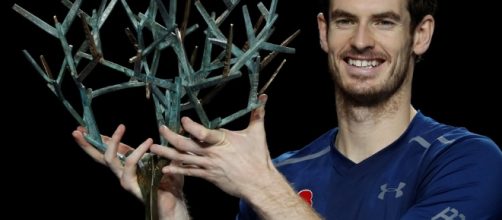Andy Murray is the new world number one. In his first match in that capacity the Scot saw off John Isner in the Paris Masters 1000 final 6-3, 6-7 (4-7), 6-4 to confirm his status as the world’s best player. He has achieved this at the age of 29 - pretty young relatively speaking yet, in tennis terms, Murray is entering his twilight years.
Andy's success story
All the more impressive then that he was able to reach the pinnacle of the sport now, rather than five or six years ago when he was a sprightly Glaswegian fresh on the scene, right? Well, perhaps not.
A trend seems to be emerging in recent times that suggests players have more success with a racket in hand when they become older.
Both Novak Djokovic and his successor as number one realised their full potential later in their careers rather than sooner. In fact, the last player to achieve this level of success on a consistent basis was a shaggy haired Rafa Nadal when he won the 2005 French Open at 19. It could be argued, of course, that Djokovic and Murray’s respective late blooming is owing to the presence of the Spaniard and a certain Roger Federer. Their form wilted as the current number one and two’s soared. However, there may be more to it than this.
After all, there is no shortage of young talent in the ATP tour these days.
Dominic Thiem and Alexander Zverev are oozing with eye catching form, the former being a qualifier for the Barclays World Tour Finals at the incredibly young age of 22. Milos Raonic and Grigor Dimitrov, while a generation older, possess equally impressive skill and yet have failed to clinch a grand slam. Djokovic, Nadal, Murray, Wawrinka and Cilic have soaked up every major over the last four seasons. Every one of them was closer to their 30th birthday than their 20th when doing so.
So why are the youngsters struggling? Well, for one thing the advent of new technology has not aided their cause. Lighter racket heads, tighter strings able to generate more spin and shoes so well made they render the difference between running on broken glass and a memory foam mattress intelligible have diluted the edge that younger players can generate.
It is harder to establish physical dominance over your opponent when everyone can serve at 120 MPH and run down seemingly irretrievable shots.
Therefore, more importance is placed on your mental strength. It is here where the older players gain the advantage. A level head and ruthless conviction are what is required to win grand slams in modern tennis. It is no longer possible to out run and out gun your opponent, you must overcome them mentally. This has always been a key to success but with modern technology bridging the gap between the old and the new, mental fortitude has rocketed to a new plateau, standing as the primary battleground where a tennis match is won and lost.
Implications of Fatherhood
Jamie Delgado cited Murray’s recent introduction to fatherhood as one of the key factors in his recent success, arguing that the maturity it brings has led to a more consistently high level of play. Djokovic was also a recent father when he realised arguably his greatest achievement in a storied career: the ‘Nole Slam’.
‘Grow up fast’ then would seem to be the solution for the up and coming players. A harsh ultimatum but one that has nonetheless been forced upon them by the evolution of the game. Success lies in the dark recesses of a player’s brain, not the strength of his arm; now more than ever.

